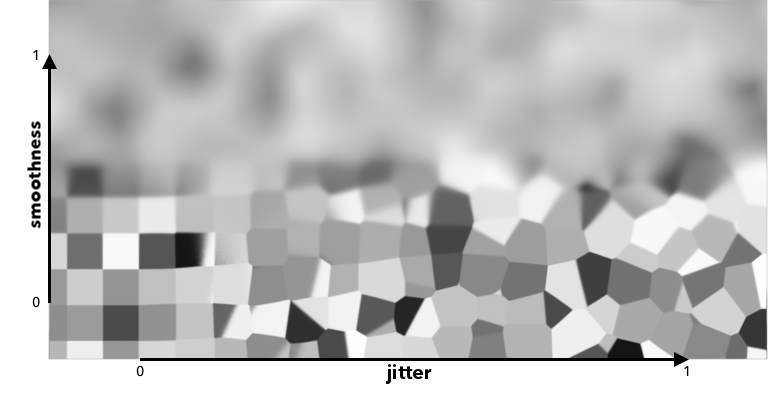...
| Info |
|---|
Compared to Inigo's code, this version also adds fractal octaves and turbulence |
Manifold
The manifold over which to apply the noise. (The default is P).
Global
Surface Position
Frequency
Sets the lowest (starting) frequency of the noise layers.Octaves
Inner Loop
Gain
Lacunarity
Jitter
Smoothness
Using 0 produces a voronoi/cellnoise pattern, 1 results in smooth noise.Turbulent
Manifold
The manifold over which to apply the noise. (The default is P).Better Contrast
Improve contrast when smoothness increases
Octaves
Smoothness Offset
Increase/decrease smoothness per octave
Smoothness Offset Wrap
Wrap the smoothness range (0-1) or just clamp
Advanced
Filter
Change the filter size
Adjust Output
Color Scale
A multiplier for the color values in a texture , can be used to adjust brightness or manipulate individual color channels
Color Offset
Apply an offset to the result, shifting the colors of the result
Alpha Scale
A multiplier for the alpha channel, useful when the alpha is used to drive a parameter
Alpha Offset
Float Scale
Scalar float value
Float Offset
Float Offset value An offset for the alpha channel, useful when the alpha is used to drive a parameter
Output Parameters
resultF
The result of voronoise texture.
resultRGB
The voronoise texture as a monochromatic color.

